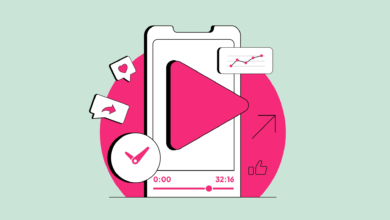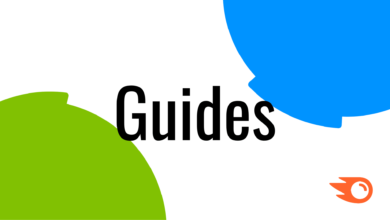Unlocking the Power of the Content Marketing Funnel: A Step-by-Step Guide

Content marketing has become a crucial strategy for businesses looking to attract and engage their target audience. One of the key components of a successful content marketing strategy is the content marketing funnel. This funnel helps businesses guide their audience through the buyer’s journey, from awareness to conversion. In this comprehensive guide, we will explore how to unlock the power of the content marketing funnel through a step-by-step approach.
Understanding the Content Marketing Funnel
The content marketing funnel is a framework that outlines the stages a potential customer goes through before making a purchase decision. It consists of three main stages:
- Awareness: This is the top of the funnel stage where businesses aim to attract the attention of their target audience and create brand awareness.
- Consideration: In this stage, businesses provide valuable content to educate and nurture leads, helping them consider their product or service as a solution to their problem.
- Conversion: This is the bottom of the funnel stage where leads are encouraged to take action, whether it’s making a purchase, signing up for a newsletter, or requesting more information.
Step 1: Create Compelling Content
The first step in unlocking the power of the content marketing funnel is to create compelling content that resonates with your target audience at each stage of the funnel. This content can take various forms, including blog posts, videos, infographics, case studies, and more.
For the awareness stage, focus on creating engaging and shareable content that grabs the attention of your target audience. This could be informative blog posts, entertaining videos, or eye-catching infographics that showcase your brand’s personality and values.
In the consideration stage, provide valuable and educational content that addresses your audience’s pain points and positions your product or service as a solution. This could include case studies, whitepapers, how-to guides, and testimonials that demonstrate the benefits of your offering.
Finally, in the conversion stage, create content that encourages leads to take action. This could be a limited-time offer, a free trial, a demo, or a compelling call-to-action that prompts visitors to make a purchase decision.
Step 2: Distribute Your Content Strategically
Once you have created compelling content for each stage of the funnel, the next step is to distribute it strategically to reach your target audience. Consider using a mix of organic and paid channels to maximize your reach and engagement.
For the awareness stage, focus on social media marketing, search engine optimization (SEO), and influencer partnerships to increase brand visibility and attract new visitors to your website. Leverage platforms like Facebook, Instagram, Twitter, and LinkedIn to share your content and engage with your audience.
In the consideration stage, use email marketing, webinars, and content syndication to nurture leads and move them closer to making a purchase decision. Create targeted email campaigns that deliver personalized content based on the lead’s behavior and interests, and host webinars or virtual events to educate leads about your product or service.
For the conversion stage, utilize retargeting ads, landing pages, and live chat to drive leads towards taking action. Retarget leads who have shown interest in your product or service with personalized ads that encourage them to make a purchase, and create optimized landing pages with clear calls-to-action that guide visitors towards conversion.
Step 3: Measure and Optimize Your Results
Once you have implemented your content marketing funnel, it’s essential to measure and optimize your results to ensure its effectiveness. Use key performance indicators (KPIs) to track the performance of your content at each stage of the funnel and make data-driven decisions to improve your strategy.
For the awareness stage, track metrics like website traffic, social media engagement, and brand mentions to gauge the effectiveness of your content in attracting new visitors. Use tools like Google Analytics, SEMrush, and BuzzSumo to analyze your performance and identify areas for improvement.
In the consideration stage, monitor metrics like email open and click-through rates, webinar attendance, and lead nurturing conversions to evaluate the impact of your content on lead engagement and progression. A/B test different content formats, messaging, and CTAs to optimize your campaigns for better results.
For the conversion stage, measure metrics like conversion rate, average order value, and customer lifetime value to assess the effectiveness of your content in driving leads towards making a purchase. Identify friction points in the conversion process and optimize your landing pages, CTAs, and follow-up strategies to improve your conversion rate.
Frequently Asked Questions
What is the role of content marketing in the sales funnel?
Content marketing plays a crucial role in guiding leads through the sales funnel by providing valuable and relevant content at each stage of the buyer’s journey. From creating brand awareness to nurturing leads and driving conversions, content marketing helps businesses engage their audience and build relationships that lead to long-term customer loyalty.
How can I create a content marketing funnel for my business?
To create a content marketing funnel for your business, start by understanding your target audience and their needs at each stage of the funnel. Develop a content strategy that aligns with your business goals and creates content that resonates with your audience. Distribute your content through various channels to reach your target audience and measure your results to optimize your strategy for better performance.
What are some best practices for optimizing a content marketing funnel?
Some best practices for optimizing a content marketing funnel include defining clear goals and KPIs, creating high-quality and relevant content, leveraging data and analytics to make data-driven decisions, personalizing content for different audience segments, and testing and iterating on your strategy for continuous improvement.
By following these steps and best practices, businesses can unlock the power of the content marketing funnel and drive meaningful engagement and conversions with their target audience.




